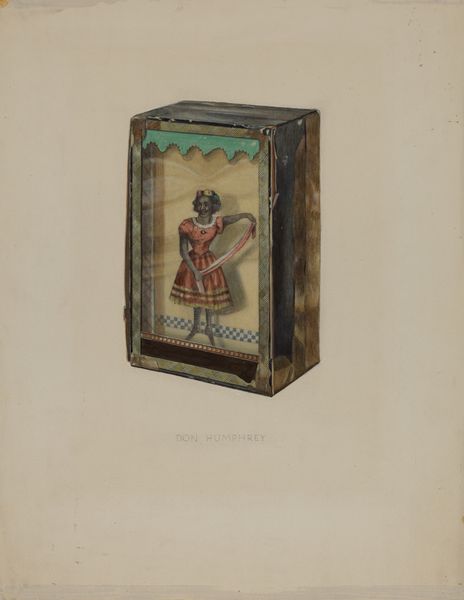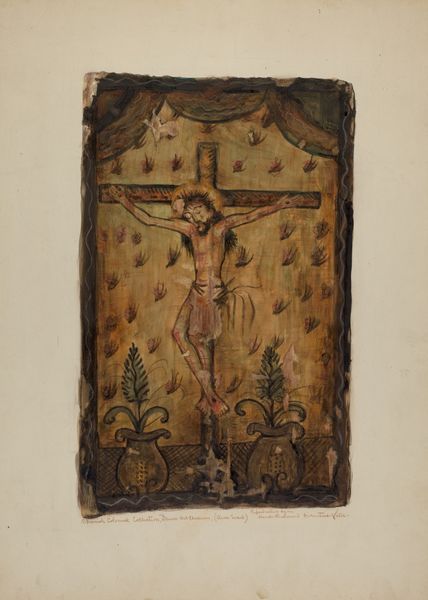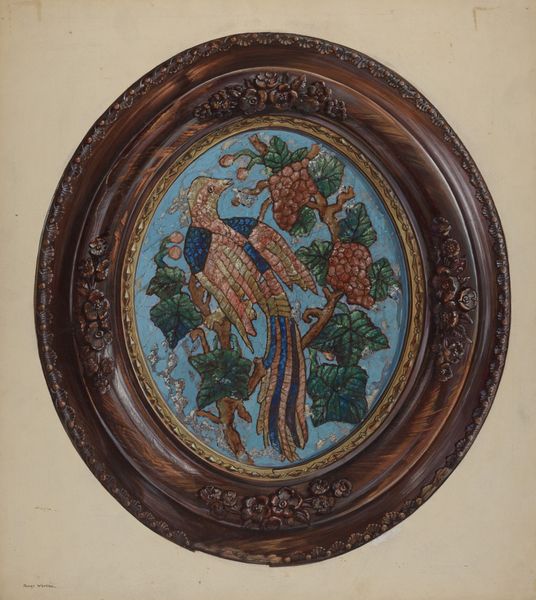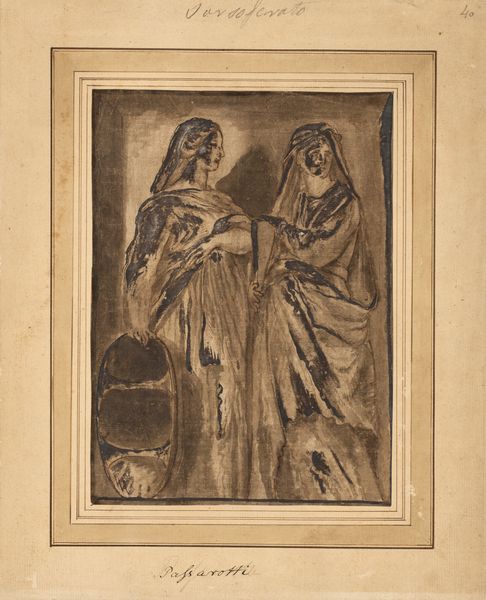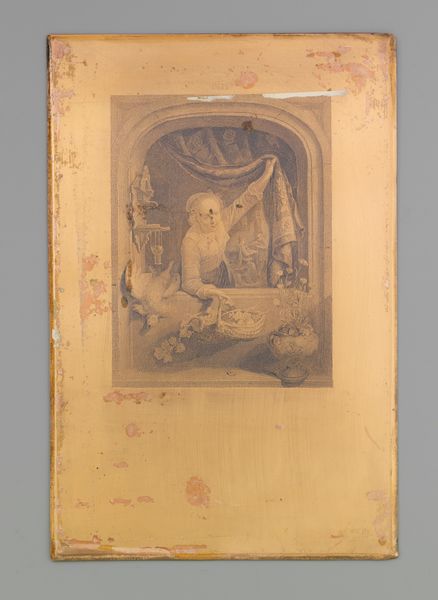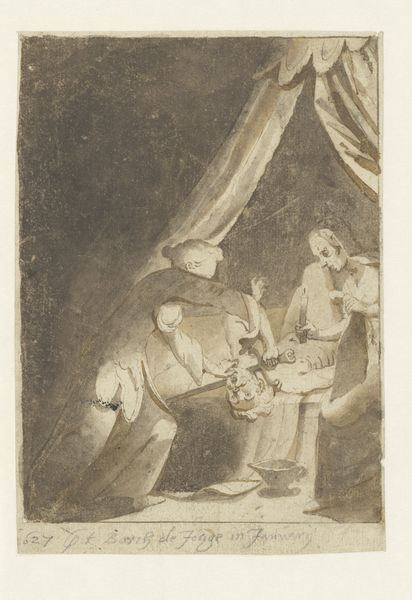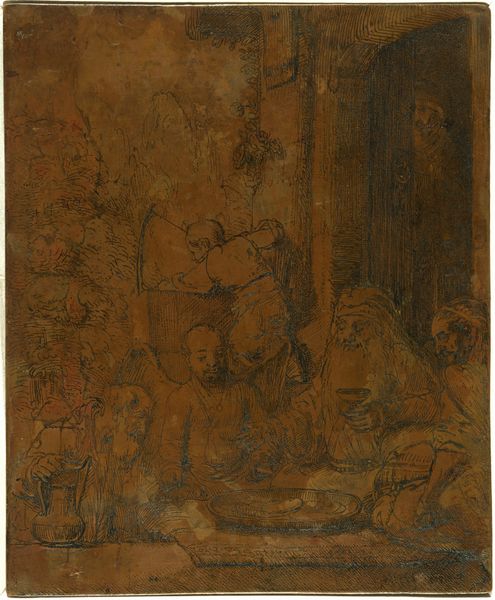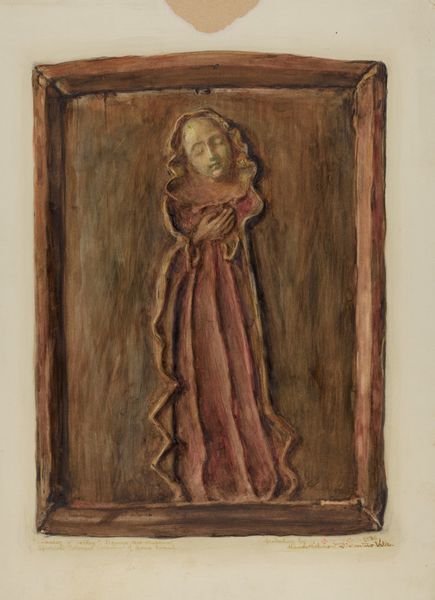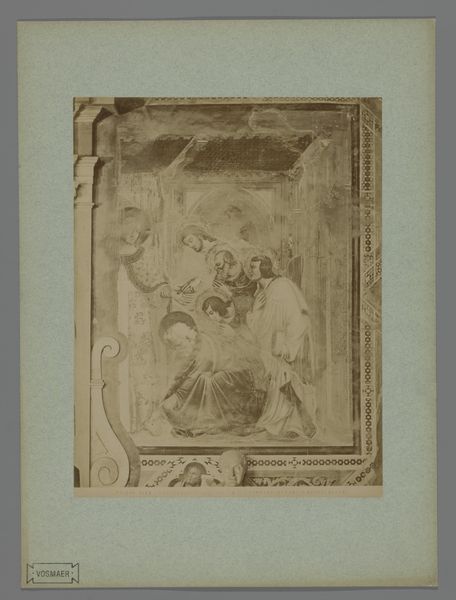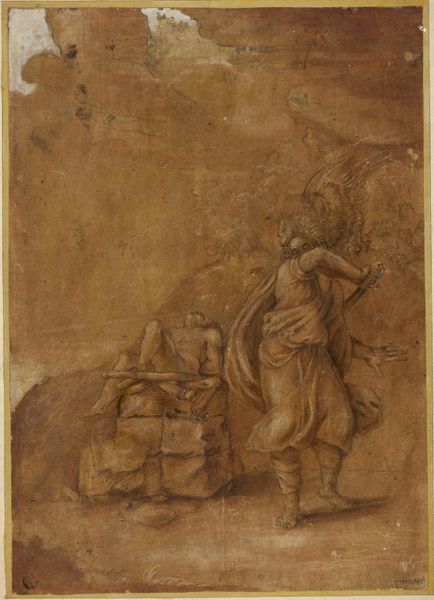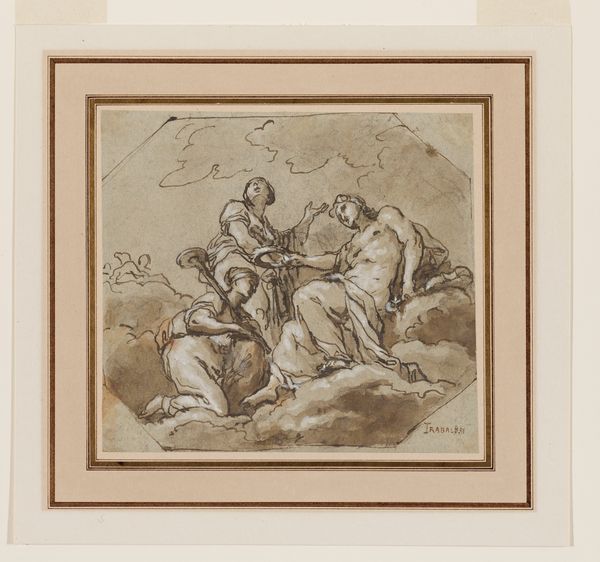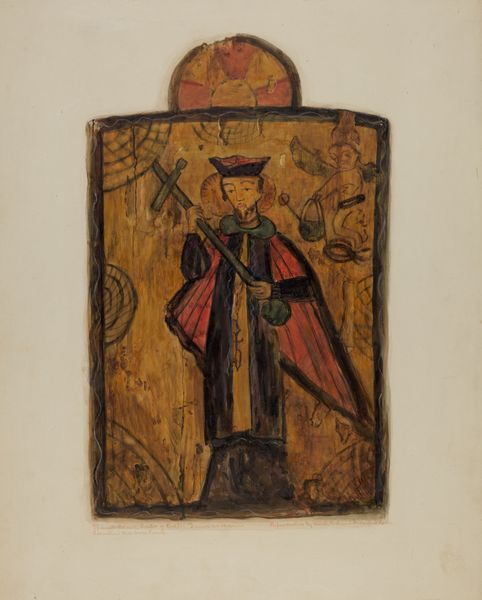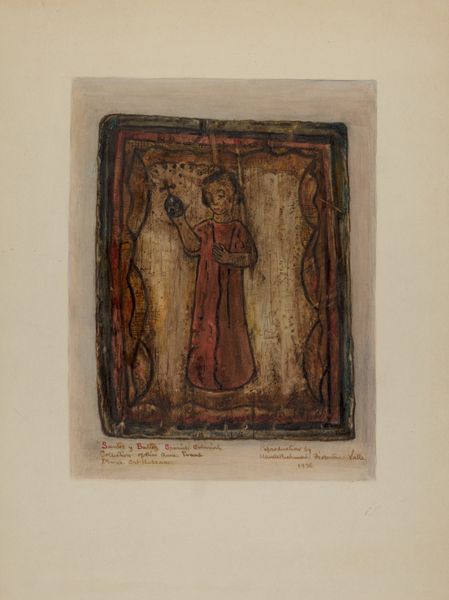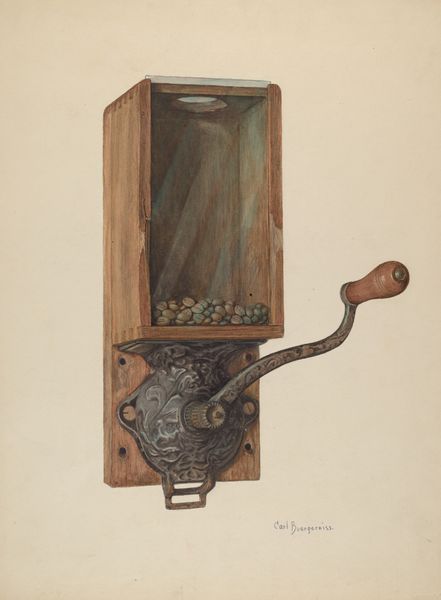
mixed-media, fibre-art, textile
#
portrait
#
mixed-media
#
fibre-art
#
narrative-art
#
textile
#
folk-art
#
genre-painting
Dimensions: overall: 61.4 x 48.9 cm (24 3/16 x 19 1/4 in.) Original IAD Object: 60" high; 10" wide
Copyright: National Gallery of Art: CC0 1.0
Curator: This mixed-media piece, entitled "Fire Screen," was created around 1937 by Charles Bowman. Its charm lies in its synthesis of textile work and representational imagery. What strikes you about it? Editor: Immediately, it's the darkness of the ground contrasted with the brighter figures that creates an intimate and, dare I say, slightly melancholy mood. It feels almost like looking back into a memory. Curator: Interesting. Given its potential functionality as a fire screen, its somber palette might seem a curious choice, particularly as textiles of this period often featured bolder colors. However, the piece can be interpreted through the lens of folk art traditions and narrative-art tropes, which may suggest it’s less about mere functionality and more about story-telling and heritage. Editor: Precisely. Look at the way the scene unfolds, it's clearly domestic but there’s also a clear social dynamic. A woman gesturing to a young child—perhaps she's offering him something or comforting him. The very materials signal tradition. How does this placement within a tradition change the interpretation? Curator: I believe it gives us clues to its intent. By working within traditional textile practices Bowman engages the medium as a cultural text, speaking to generational techniques and folk themes. This could hint at wider narratives on familial roles during challenging socio-economic circumstances during this time. Editor: The choice to frame the embroidery within what resembles a framed painting—or perhaps alluding to an old-fashioned portrait—further refines the piece. It’s elevating what would be a conventional functional piece to the status of "Art," making implicit, and complicated, class statements. Curator: It absolutely provokes consideration on class and the perceived hierarchy of art forms, a prevalent concern for that era. The intimacy of domestic scenes also reflects a yearning for simpler times and values perhaps threatened by the burgeoning modernity of the period. Editor: The contrast is certainly striking—folkloric themes presented via increasingly anachronistic formats, inviting dialogue on modern life’s displacement through more primitive creative methods. So the work, rather beautifully, manages to pose quite contemporary meta-narratives, wrapped within nostalgia. Curator: Agreed. Approaching Bowman’s “Fire Screen,” we unveil the complex interplay between the artist’s selection of materials and social narratives, echoing the multifaceted function of art as both object and messenger. Editor: Yes, it’s less screen and more stage for social discourse.
Comments
No comments
Be the first to comment and join the conversation on the ultimate creative platform.
